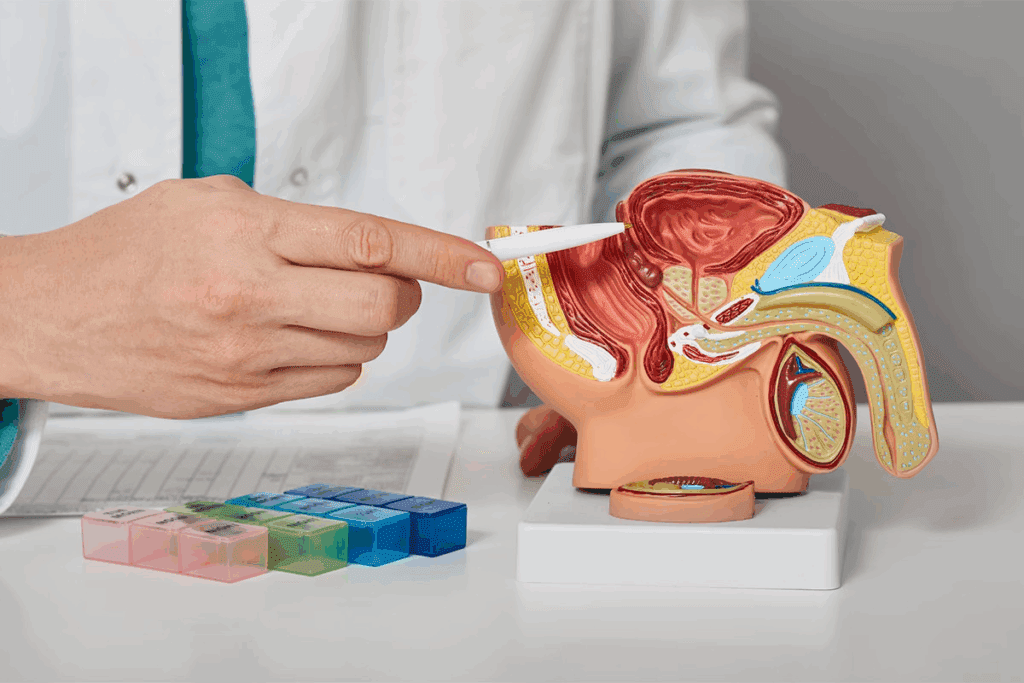Last Updated on November 25, 2025 by Ugurkan Demir

Benign Prostatic Hyperplasia (BPH) is a common issue for aging men. It causes the prostate gland to grow, leading to urinary problems.Learn to navigate the prostate workup algorithm bph using AUA guidelines. Understand the step-by-step process for BPH diagnosis.
Men with BPH might find it hard to start urinating, have a weak flow, or need to go often, even at night. Knowing these symptoms is key to getting the right medical help.
Dealing with BPH means making lifestyle changes and sometimes getting medical treatment. Spotting the signs early and getting treatment can help men feel better and live better lives.

Benign Prostatic Hyperplasia (BPH) is a condition where the prostate gland gets bigger. This leads to symptoms like trouble with urination. Hormonal changes, like the conversion of testosterone to dihydrotestosterone (DHT), play a big role in this.
DHT is a strong form of testosterone that makes prostate cells grow. When DHT builds up in the prostate, it makes the gland bigger. This causes symptoms like a weak urine flow, needing to urinate often, and waking up to use the bathroom at night.
The growth of BPH is a complex process. It involves hormones, cells, and molecules working together. Knowing how these work is key to finding good treatments.
| Hormone | Role in BPH |
| Testosterone | Converted to DHT, promoting prostate growth |
| DHT | Involved in the development of BPH |

Diagnosing BPH requires a detailed medical check-up. This includes a digital rectal examination (DRE) and Prostate-Specific Antigen (PSA) testing. Getting the diagnosis right is key for effective treatment.
The first step is a detailed medical history. This helps identify symptoms and rule out other conditions. A healthcare provider will then do a DRE to check the prostate’s size and feel.
PSA testing is also vital. High PSA levels can mean BPH, prostate cancer, or other issues. This test helps doctors understand what’s going on.
Treatment for BPH depends on how bad the symptoms are. Options range from lifestyle changes to medicines or surgery. The aim is to ease symptoms, boost quality of life, and avoid complications.
Managing BPH requires a mix of lifestyle changes and medical treatments. Knowing the options, like alpha-blockers and 5-alpha-reductase inhibitors, helps. This way, men can work with their doctors to find the best plan for them.
By treating BPH in a full way, men can feel better. They can also lower the chance of serious problems and improve their health.
BPH, or Benign Prostatic Hyperplasia, is a non-cancerous growth of the prostate gland. It causes urinary symptoms in men. It’s common and affects many men as they get older.
Symptoms include trouble starting to urinate and weak urine flow. You might also urinate more often, wake up at night to pee, and strain while peeing.
Preventing BPH is hard, but a healthy lifestyle helps. Eating well and exercising regularly can reduce symptoms. Managing health issues like diabetes and high blood pressure also helps your prostate.
National Center for Biotechnology Information. (2025). How to Navigate the Prostate Workup Algorithm for. Retrieved from https://www.ncbi.nlm.nih.gov/pmc/articles/PMC1765043/
Subscribe to our e-newsletter to stay informed about the latest innovations in the world of health and exclusive offers!